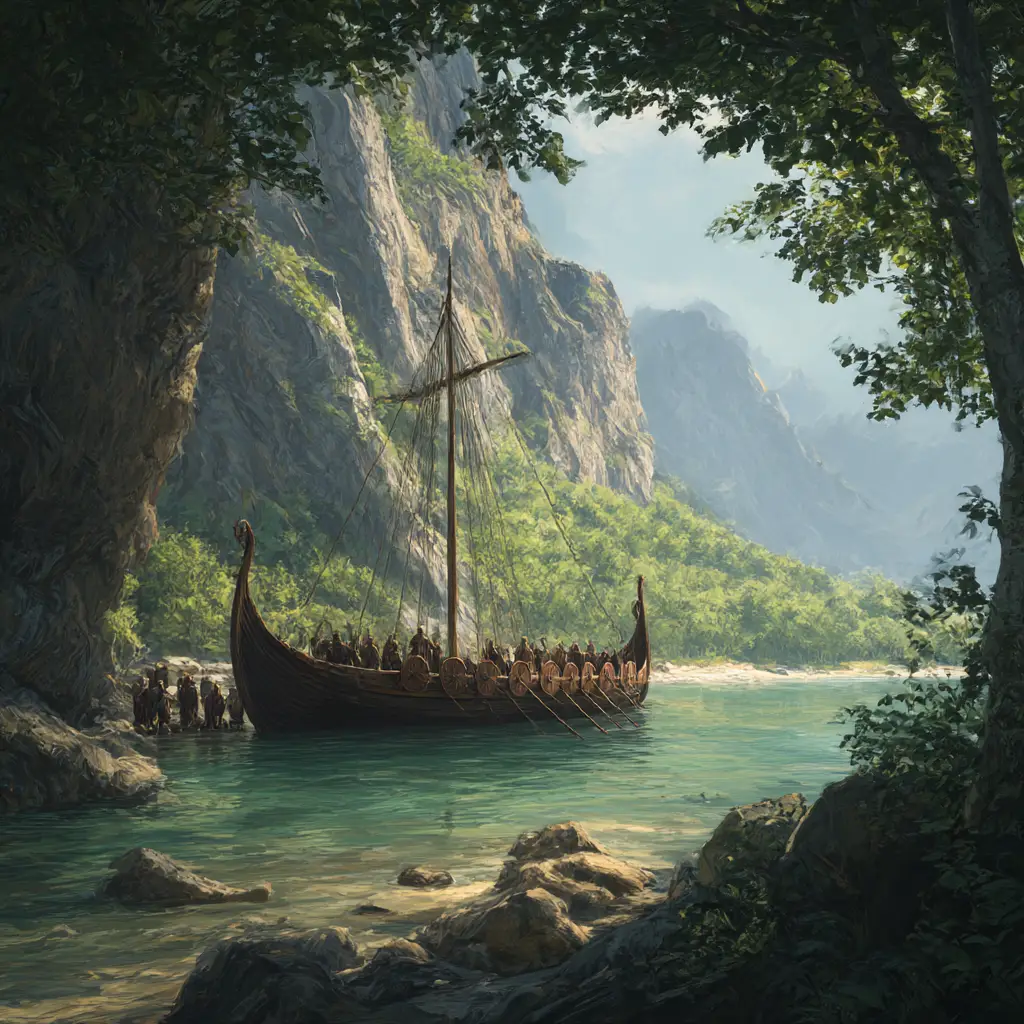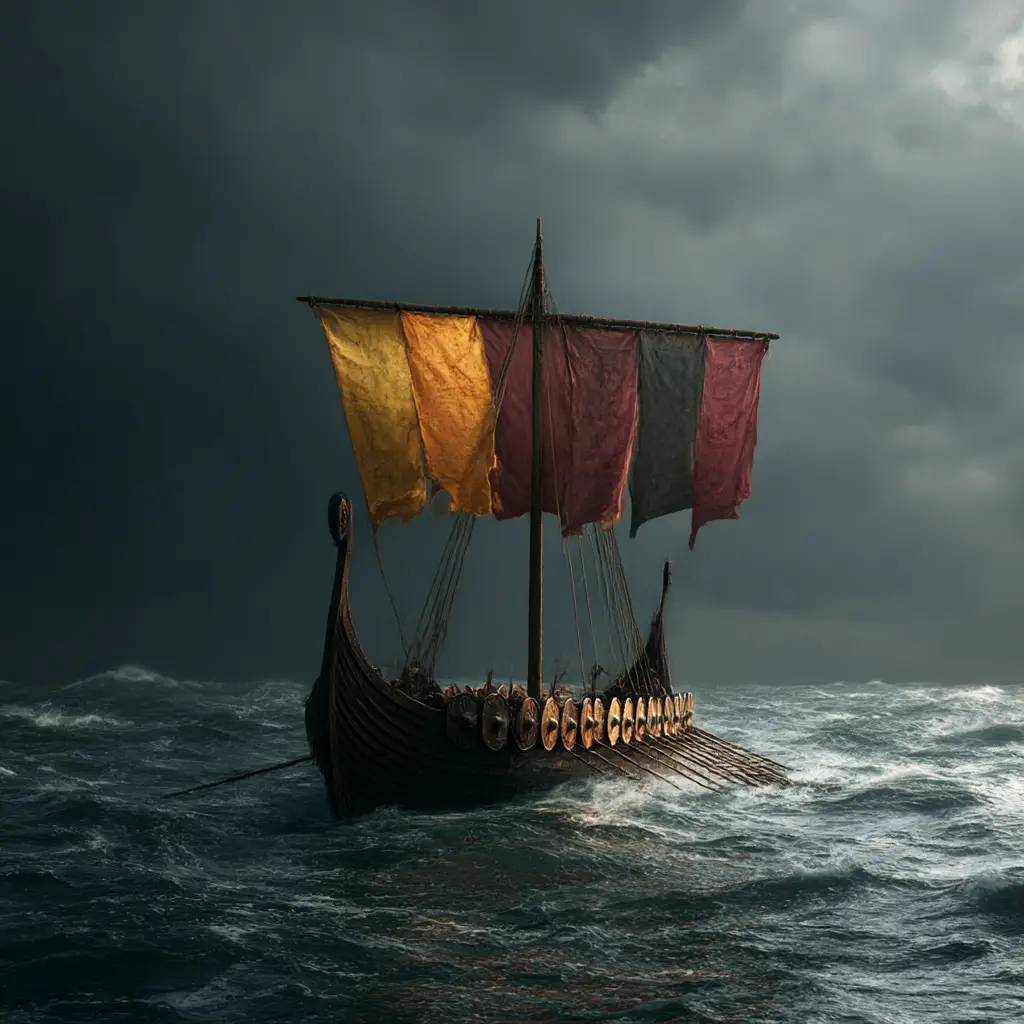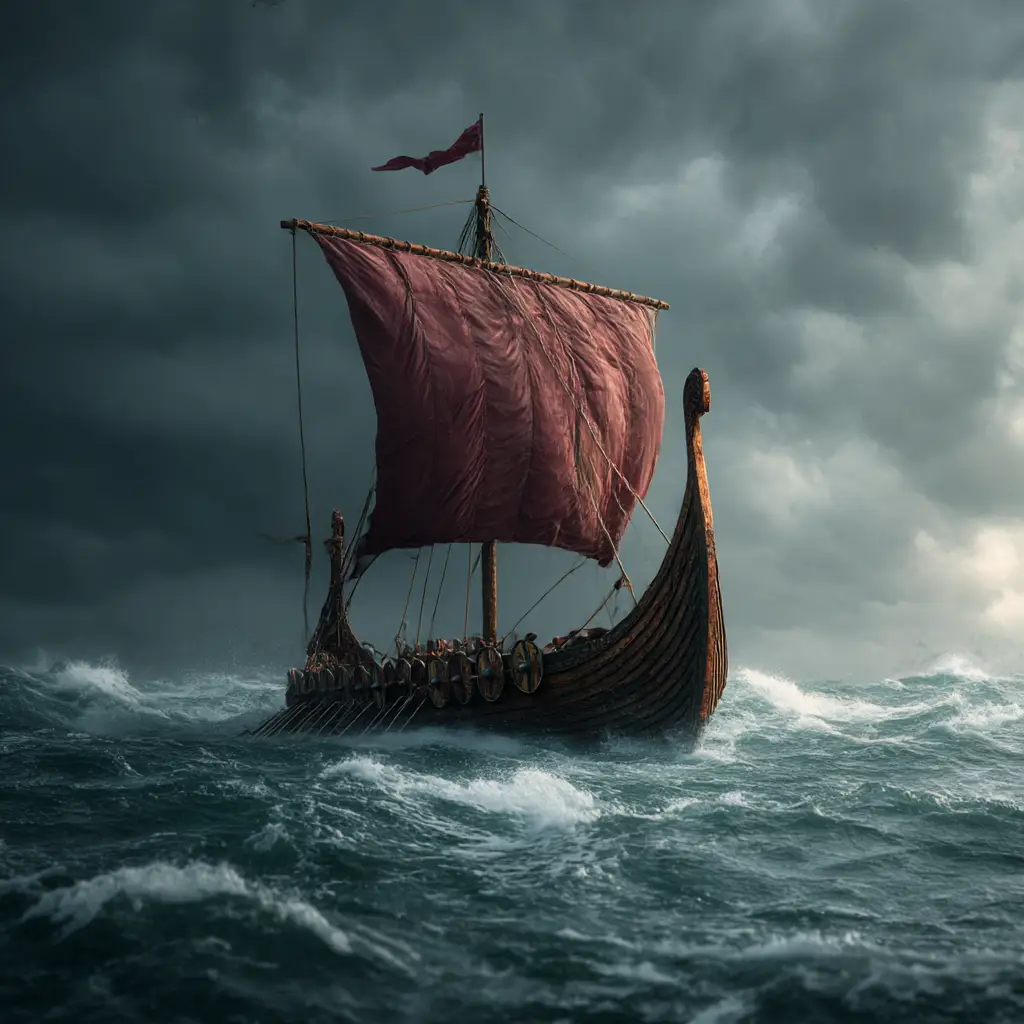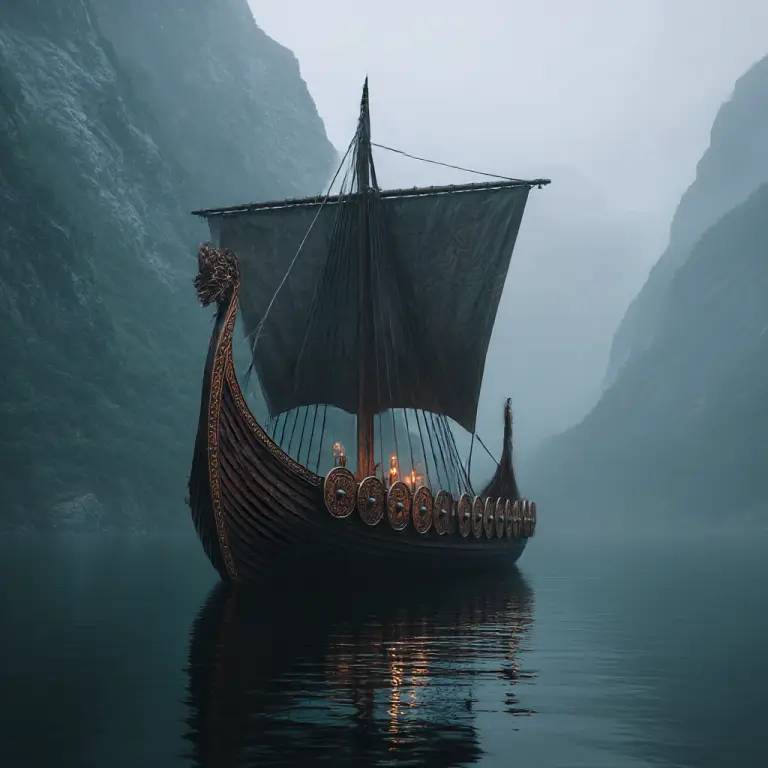Viking Longships
Viking longships stand as one of the most iconic symbols of the Norse world. These vessels combined advanced craftsmanship, speed, and versatility, allowing the Vikings to explore, trade, raid, and settle across vast areas of Europe and beyond.
Developed during the early medieval period, longships were constructed with overlapping planks of oak, a technique known as clinker building. This method produced hulls that were strong yet flexible, capable of withstanding the harsh conditions of the North Sea. The shallow draft of the ships allowed them to navigate both open waters and inland rivers, giving the Vikings an enormous advantage in mobility. They could approach coastlines with ease, even beaching directly onshore, which made swift attacks and equally rapid retreats possible.
The design of the longship was both functional and elegant. A single square sail, often woven from wool and dyed in striking colours, provided speed when winds were favourable. In calm conditions, oarsmen propelled the ship, with benches running along the sides for up to sixty rowers. The combination of sail and oars meant the vessels could cover great distances quickly and reliably.
The long, narrow shape of the ships, along with their symmetrical bow and stern, allowed them to reverse direction without turning. Carvings often adorned the prow, sometimes shaped into dragons or serpents, believed to offer protection or strike fear into enemies. Each vessel reflected not only the skill of its builders but also the wealth and status of its owner.
Longships were central to every aspect of Viking life. They carried warriors on raids, merchants on trading journeys, and settlers to new lands such as Iceland, Greenland, and even North America. They were also important in ritual and belief, with ship burials reserved for high-ranking individuals, symbolising a vessel for the journey to the afterlife.
The enduring legacy of the Viking longship lies in its remarkable blend of engineering and culture. It was more than just a means of transport; it was a tool of expansion, a weapon of war, and a symbol of Norse identity.



